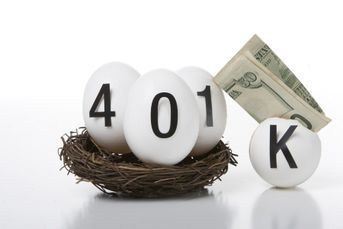This ETF is rated R
While there's no real evidence that ETFs pose a systemic risk, they can hold some pretty exotic stuff. Perhaps the unique dangers of some ETFs should be flagged more prominently. How about a movie-rating-style approach?
There’s been a flurry of articles about the dangers of exchange-traded funds. BlackRock Inc.’s Larry Fink said leveraged ETFs could “blow up” the industry, even though they have microscopic assets and own less than 0.02% of the derivatives market. There’s also been chatter about potential problems with ETFs that track illiquid assets, such as senior loans, if there’s a run for the exits.
While there’s no real evidence that ETFs pose a systemic risk, they can hold some pretty exotic stuff. And just because they trade like stocks, that doesn’t mean they’re all as liquid or straightforward as stocks. Perhaps the unique dangers of some ETFs should be flagged more prominently.
One solution is “gating.” That means requiring a separate set of disclosures for products that cross a certain line based on their use of leverage or derivatives. Makes sense; getting people to read those disclosures is another matter. And if you gate, where do you draw the line? Should commodity ETFs be gated? Hedge fund replication ETFs? Junk bonds ETFs? ETFs are nuanced, and their riskiness and complexity don’t come from their holdings or regulatory structure alone.
Now, movie ratings — there’s a system everyone understands.
G
Anything that holds developed market stocks or bonds using standard market capitalization-weighted indexes. This is for straightforward ETFs with no complicated tax implications. Think Vanguard.
Examples: iShares Core S&P 500 ETF (IVV), Vanguard Short-Term Government Bond ETF (VGSH)
PG
Any ETF that track stocks or bonds but uses an index that isn’t weighted by market cap and that attempts to outperform the market, like smart-beta and actively managed ETFs. This category would also include physically backed commodity ETFs such as gold and silver.
Examples: Guggenheim S&P 500 Equal Weight ETF (RSP), SPDR Gold Shares (GLD)
PG-13
ETFs that track slightly more exotic stocks or bonds that could pose liquidity concerns. ETFs that can frequently trade at a premium or discount to the value of their underlying assets, such as emerging markets and junk bond ETFs, go here. Specialized products that involve otherwise particularly tricky markets or tax consequences — China, master-limited partnerships, mortgage REITs, currency- and interest-rate hedged ETFs and alternative strategies — get a PG-13.
Examples: iShares MSCI Frontier Markets 100 (FM), PowerShares Senior Loan Portfolio (BKLN)
R
Not suitable for retail investors. Any ETF that predominately holds derivatives such as swaps or futures. This includes all leveraged and inverse ETFs plus all single-commodity ETFs that hold futures contracts. Non-leveraged exchange-traded notes and volatility (VIX) products also fall in here. If a bitcoin ETF comes out, it would land here.
Examples: Direxion Daily Gold Miners Bull 3x Shares (NUGT), United States Natural Gas Fund (UNG)
NC-17
Any leveraged ETN, in which investors get the double dose of leverage and credit risk. These are those rare products that make — or should make — even professional investors think twice.
Examples: VelocityShares Daily 2x VIX Short-Term ETN (TVIX)
(Bloomberg News)
Learn more about reprints and licensing for this article.








